Vincent Van Gogh is one of the main reasons why people visit Arles but it feels increasingly as if the artist and the place have outgrown one another. The house on Place Lamartine that starred in The Yellow House and Bedroom in Arles (both 1888) was bombed in 1944 and subsequently demolished; the bistro he painted in Café Terrace at Night (1888) was reconstructed nearby in the 2000s but has been closed since 2023. The Fondation Van Gogh has just two rather murky works by the painter – currently shoehorned in to an excellent Sigmar Polke retrospective – and if it weren’t for the copious starry-night-festooned postcards and bottle openers on sale at market stalls, or the lines of American tourists strolling through the cobbled streets on Van Gogh walking tours, the artist’s impact on this small city in Provence would be hard to detect.
Nowadays Arles’s art scene tends towards the contemporary, and at the heart of it is the Luma Foundation, the arts non-profit set up by the pharmaceuticals billionaire Maja Hoffmann, which puts on exhibitions in the Frank Gehry-designed Luma Tower. Rising up above this otherwise low-rise city of Roman-era monuments and amphitheatres, the Luma building resembles a jagged cliff face with a sheet of tin foil draped over it. It is impressive, if slightly monstrous, and feels less incongruous than I expected from the pictures.
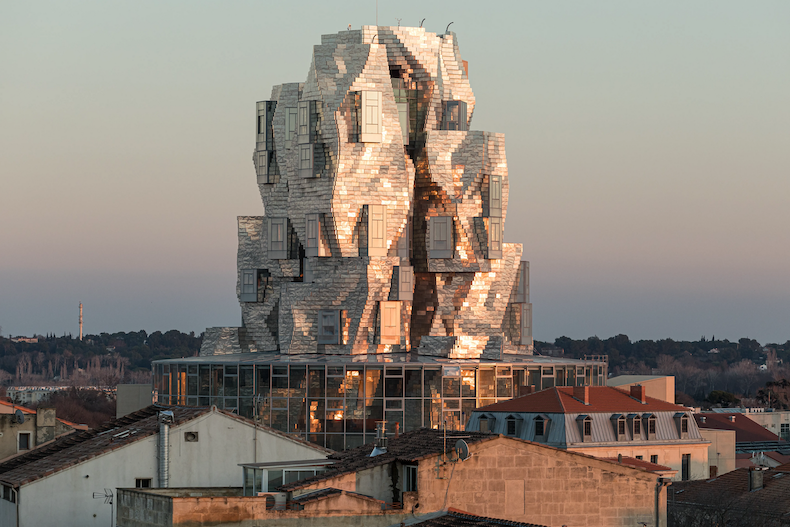
The Luma tower in Arles, France, designed by Frank Gehry. Photo: © Adrian Deweerdt
A slate of exhibitions has just opened at Luma as part of its summer programme. Only one of these is an original creation – a mini-retrospective of the Austrian artist Maria Lassnig co-curated by Hans Ulrich Obrist, director of the Serpentine in London and a close friend of Lassnig’s until her death in 2014. Part of this involves an archive room displaying some of the letters Lassnig and Obrist wrote to each other, posters inspired by Lassnig’s paintings and boxy televisions playing clips of the pair in conversation. The jauntiness of her letters is matched by the watercolours and oil paintings on display in the rest of the show, from Breakfast with Ear (1967), in which three kitchen appliances gather round a picnic blanket with, at its centre, a disembodied ear on a plate, to Self-Portrait with Saucepan (1995), with an upturned pot placed on her head in an act that, in its commitment to utter silliness, feels somehow defiant.

Breakfast with Ear (1967), Maria Lassnig. Courtesy Maria Lassnig Foundation; © ADAGP, Paris, 2025/Maria Lassnig Foundation
The most ambitious exhibition in this slate is ‘Sensing the Future’, which has been adapted for the Luma space after having debuted at the Getty Research Institute last year. It covers the Experiments in Art and Technology (E.A.T.) organisation, initiated by the artists Robert Rauschenberg and Robert Whitman and two Bell Labs engineers, Billy Klüver and Fred Waldhauer, which sought to use technological experimentation for artistic expression – as E.A.T.’s mission statement put it, a ‘civilized collaboration between groups unrealistically developing in isolation’. The movement sparked into life in 1966 with ‘9 Evenings: Theatre & Engineering’, a festival of sorts at the 69th Regiment Armory in New York, for which artists were asked to create original performance pieces with the help of engineers. Footage of those pieces is on show here: we watch the artist Alex Hay – clad in what looks like a suicide vest but is actually a series of electrodes that translate his internal bodily processes into a modular wailing sound – as he wanders around the stage, placing 64 cloth squares down in a grid, before sitting down in the middle while Rauschenberg and the dancer Steve Paxton prod at the cloth with long poles. In another performance, John Cage twiddles knobs to produce his fuzzy composition Variations VII; elsewhere, Lucinda Childs swings three buckets across the stage at various speeds, each one interrupting ultrasonic beams in order to produce what sounds like the echoey drip-drop of some subterranean cave interspersed with erratic bows of a cello.
Crackly, black and white, slightly incomprehensible but thrilling nonetheless, the experience is not dissimilar from watching moon-landing footage. And ‘9 Evenings’, the exhibition makes clear, had an outsize impact on the avant-garde art of the late ’60s and ’70s. The decade or so of restless experimentation that followed is represented here by a range of works by E.A.T. members, as well as fringe figures. At times the show tells a story of (largely male) insiderishness, the apex of which might well be a copy of ‘Moon Museum’ – a tiny ceramic computer chip sent up to the moon on the Apollo 12 module on which six artists, including Rauschenberg, drew little pictures; Warhol contributed a doodle of a tiny cartoon penis.
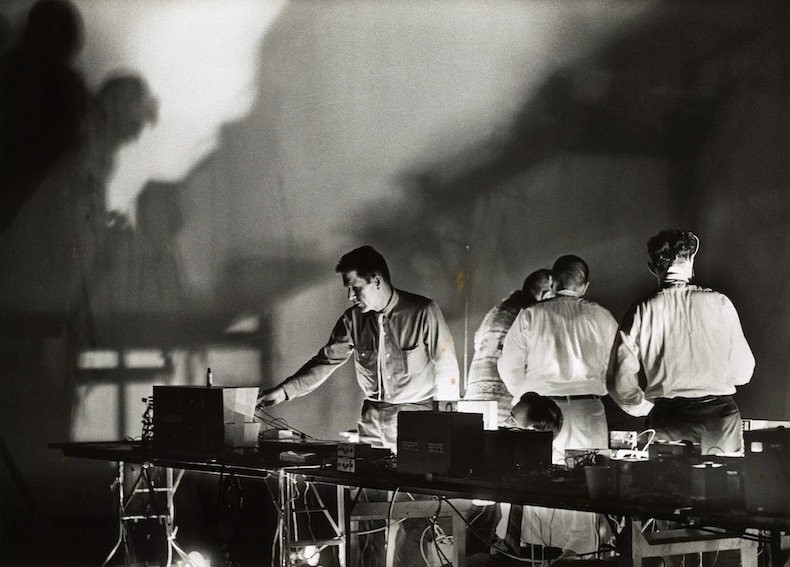
John Cage performing Variations VII for the first time at ‘9 Evenings: Theatre and Engineering’ in 1966. Photo: Peter Moore; © Northwestern University/J. Paul Getty Trust
But there are mesmerising pieces of innovation too – not least Fujiko Nakaya’s ‘fog sculptures’, which she developed for the futuristic Pepsi pavilion designed by a group of E.A.T. affiliates at the Osaka Expo in 1970. Nakaya, now in her nineties and still going strong, is one of the last remaining bridges between E.A.T. and the present. At Luma, walk out on to the grass behind the building and you’ll find Nakaya’s handiwork there too, a serene lake shrouded in a heady mist, at once comforting and uncanny. A less dramatic work, but possibly the most effective piece here is Hans Haacke’s Photoelectric Viewer-Controlled Coordinate System (1968), a dark room in which the four walls are fitted with seven evenly spaced light bulbs and, underneath each one, a tiny photosensitive receptor. As the viewer walks through the room, the bulbs that correspond to their position in the room lights up, so that the light ends up pinpointing one’s physical location. It is slightly unnerving to be followed, surveilled, geo-located by such a rudimentary looking piece of technology, the bulbs changing with a mechanical click as you walk from one side to the other.
It is that click – and sound in general – that I thought about more and more as I made my way through these E.A.T. works. For those of us who grew up in the noughties, the era of dial-up internet, early PlayStations and flip phones, the noises that characterise ‘Sensing the Future’ may well induce a pang of unexpected nostalgia for a time when sound was, for the most part, purely mechanical, part and parcel of an object’s function. Technology is now full of sound artificially generated and over-polished – the engine rumble added to an otherwise silent electric car; the vintage shutter click we get when we take a photo on our iPhones. The works on show here, made with a commitment to experimentation in its purest form, are often antiquated and imperfect, but it is partly those qualities that take them from the realm of soulless machine to that of art.
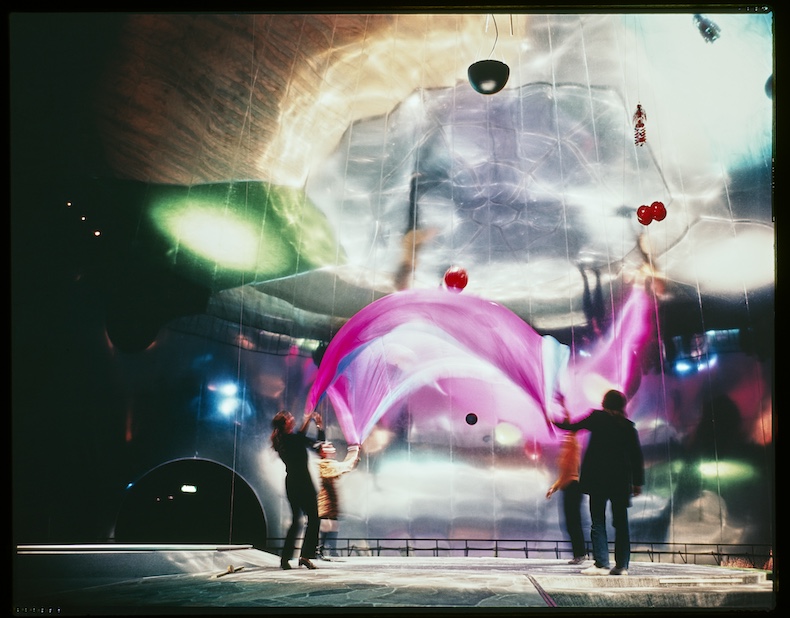
A performance inside the E.A.T. Pepsi-Cola Pavilion at Expo ’70, Osaka, in 1970. Photo: Shunk-Kender; © J. Paul Getty Trust
‘Sensing the Future: Experiments in Art and Technology (E.A.T.)’ is at Luma, Arles, until 11 January 2026; ‘Maria Lassnig: “Living with art stops one wilting!”’ is at Luma, Arles, until 10 May 2026.



 High tech before big tech – ‘Electric Dreams’ at Tate Modern, reviewed
High tech before big tech – ‘Electric Dreams’ at Tate Modern, reviewed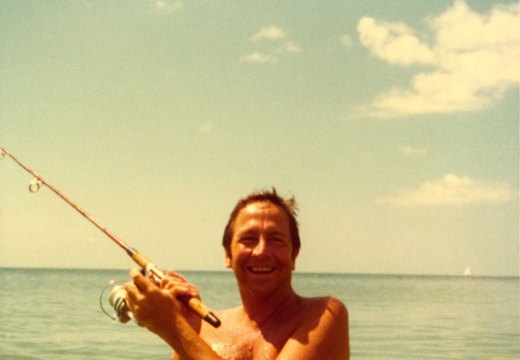
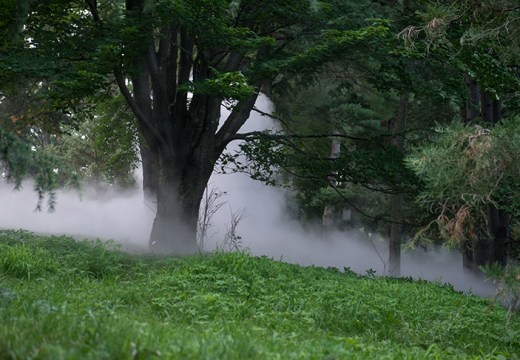









![Masterpiece [Re]discovery 2022. Photo: Ben Fisher Photography, courtesy of Masterpiece London](http://www.apollo-magazine.com/wp-content/uploads/2022/07/MPL2022_4263.jpg)
Suzanne Valadon’s shifting gaze